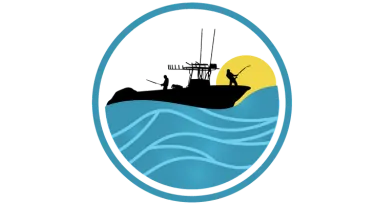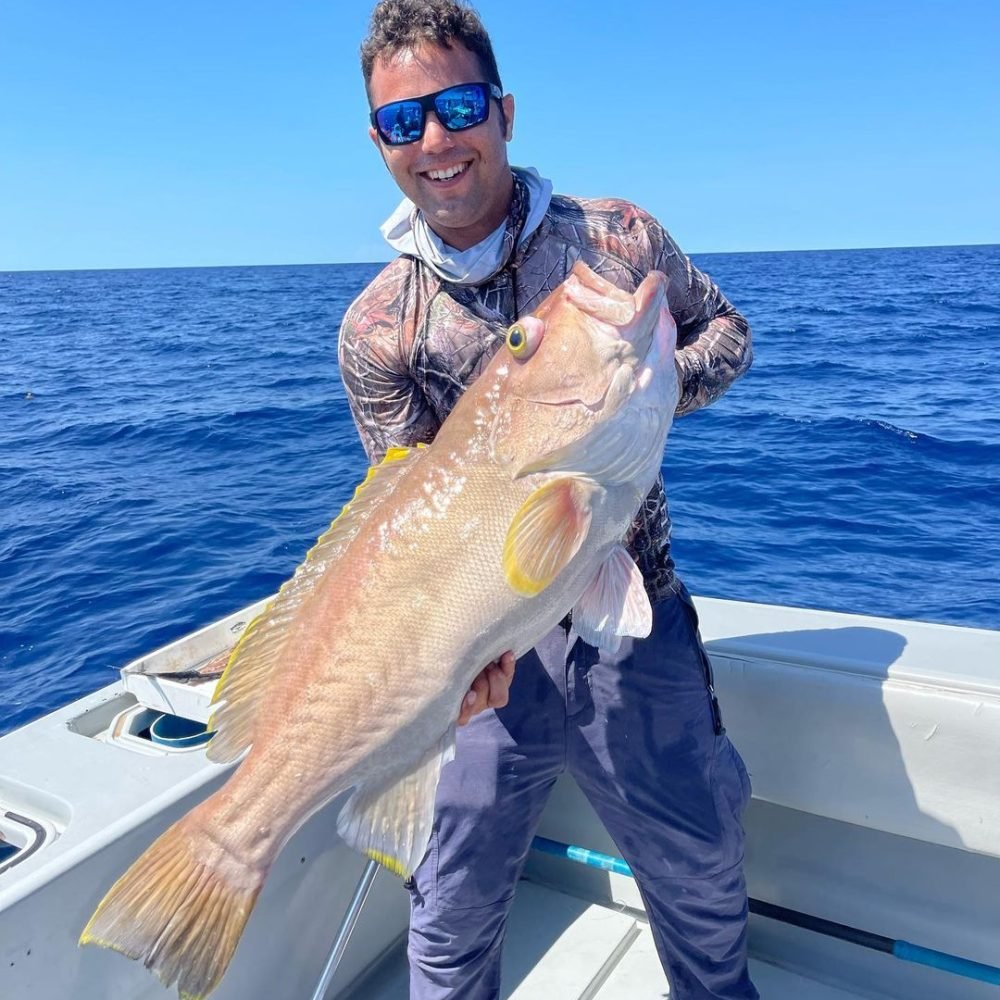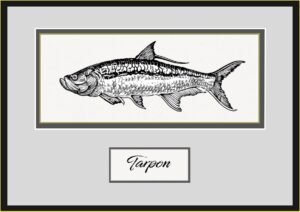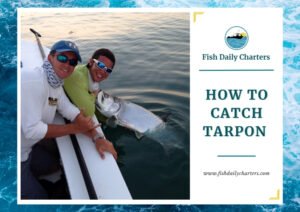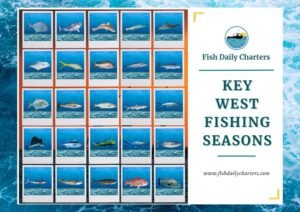Inshore fishing is better for beginners and those with limited time, while nearshore fishing is ideal for chasing bigger fish and more adventurous trips.
Inshore fishing takes place in calm, shallow waters near estuaries, jetties, and beaches, offering quick access and easier handling of species like redfish, snook, and speckled sea trout. It’s a top choice for families or anyone wanting straightforward techniques like casting or bottom fishing.
Nearshore fishing, on the other hand, requires heading farther out to reefs, wrecks, or rigs. You’ll need stronger gear to target larger fish like kingfish, cobia, or mahi mahi, and trips take longer. If you enjoy the thrill of bigger catches and exploring deeper waters, nearshore fishing delivers the adventure.
| Criteria | Inshore Fishing | Nearshore Fishing |
|---|---|---|
| Best For | Beginners, families, short trips | Experienced anglers, longer adventures |
| Water Conditions | Calm, shallow waters near the shore | Deeper waters, can be choppy |
| Travel Time | Minimal, fishing starts close to the dock | Requires travel several miles offshore |
| Target Species | Snook, redfish, speckled sea trout, tarpon | Kingfish, cobia, mahi mahi, Spanish mackerel |
| Techniques | Casting, drifting, bottom fishing | Trolling, bottom fishing, casting |
| Trip Length | 4 hours or more, flexible durations | Generally longer trips, more time required |
| Gear Complexity | Simple, easy to use | More complex, stronger tackle needed |
| Environment | Estuaries, jetties, beaches | Reefs, shipwrecks, offshore structures |
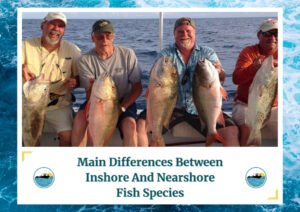
Main Differences Between Inshore and Nearshore Fish Species
Inshore Fishing Target Species
Inshore fishing is all about catching smaller fish that live near the coast. You’ll often find anglers targeting species like:
- Redfish: Known for their hard fight, found in coastal waters with sandy or muddy bottoms.
- Speckled Sea Trout: Often found in estuaries and bays, providing a fun and rewarding catch.
- Flounder: Bottom-dwelling fish are known for their delicious taste and unique flat shape.
- Sheepshead: Spotted by their black and white stripes, they are often found around structures like piers and jetties.
- Black Drum: A challenging catch known for its strength and size.
Nearshore Fishing Target Species
Nearshore fishing targets larger fish species not typically found in shallow inshore waters. Common species include:
- King Mackerel: Known for their strong fighting skills, found in deeper nearshore waters.
- Spanish Mackerel: Fast and aggressive fish providing a fun and challenging catch.
- Tarpon: Often found nearshore during their migration, known for their impressive size and acrobatic fights.
- Black Sea Bass: A popular target for bottom fishing in nearshore areas.
- Cobia: Strong fighters are often found around nearshore structures like buoys and wrecks.
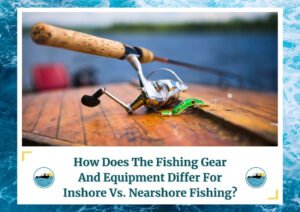
How Does the Fishing Gear and Equipment Differ for Inshore vs. Nearshore Fishing?
In fishing, the gear and equipment used change a lot. This is true between inshore and nearshore fishing. The specific environments and the types of fish being targeted determine the tools required. Inshore fishing uses lighter gear for smaller fish. Nearshore fishing needs stronger gear for larger catches. Understanding these distinctions is important to prepping for a good fishing trip. Make sure you have the right gear for the right circumstances.
Inshore Fishing Gear
The equipment used for inshore fishing is typically lighter and more adaptable compared to nearshore fishing:
- Rods and Reels: Light to medium tackle, designed for smaller fish and easier handling.
- Lines: Light lines, usually 10-20 lb test, are fine for the smaller species found inshore.
- Lures and Baits: Artificial lures, like soft plastics and topwater plugs, as well as live bait like shrimp and small baitfish.
Nearshore Fishing Gear
The equipment used for nearshore fishing is more rugged than inshore fishing gear but not as heavy-duty as offshore fishing gear:
- Rods and Reels: Medium to heavy tackle, designed for larger fish and longer fights.
- Lines: Medium lines, typically 20-50 lb test, to handle the strength of nearshore species.
- Lures and Baits: Larger trolling lures, jigs, and live bait like sardines, mackerel, and squid.
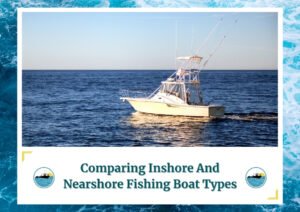
Comparing Inshore and Nearshore Fishing Boat Types
When it comes to fishing, choosing the right boat is essential for a successful and enjoyable experience. Inshore and nearshore fishing offer different challenges and opportunities. Anglers should know the differences between the boats used in these areas. This is key for making informed choices.
Inshore Fishing Boats
Inshore fishing boats are typically smaller and designed for shallow waters:
- Flats Boats: Ideal for shallow water fishing in bays and estuaries.
- Bay Boats: Slightly larger than flats boats, suitable for different inshore environments.
- Center Consoles: Versatile boats that handle both inshore and nearshore waters.
Nearshore Fishing Boats
Nearshore fishing boats are larger and built to handle deeper waters:
- Larger Center Consoles: Equipped with more powerful engines and suitable for nearshore fishing.
- Walkaround Boats: Offer both fishing capabilities and comfort, with cabins and sleeping quarters.
- Catamarans: Known for stability and a smooth ride due to their twin hulls.
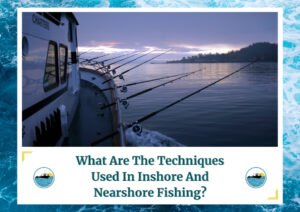
What Are the Techniques Used in Inshore and Nearshore Fishing?
Inshore and nearshore fishing require different techniques. This is because of the unique environments and fish species. Inshore fishing often involves casting and wading in shallow waters. Nearshore fishing uses trolling and jigging in deeper areas. Knowing these techniques helps you pick the best method for a successful fishing trip.
Inshore Fishing Techniques
Inshore fishing uses different techniques that are suited for the shallow and calm waters:
- Casting: Throwing lures or bait near structures or vegetation to attract fish.
- Drift Fishing: Allowing the boat to drift with the current while using bait or lures to cover a wide area.
- Wade Fishing: Anglers fish while standing in shallow water, near shorelines or flats.
- Sight Fishing: Spotting fish visually and casting directly to them requires good water clarity and calm conditions.
Nearshore Fishing Techniques
Nearshore fishing employs techniques suited for the deeper and sometimes more turbulent waters:
- Trolling: Dragging lures or baited hooks behind a moving boat to attract fast-swimming fish like king mackerel and Spanish mackerel.
- Bottom Fishing: Weighted rigs, such as snapper and grouper, are used to target species near the ocean floor.
- Jigging: Moving a weighted bait up and down in the water to attract fish like cobia and amberjack.
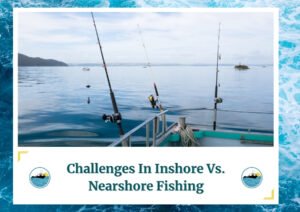
Challenges in Inshore vs. Nearshore Fishing
Inshore and nearshore fishing present unique challenges for anglers. Inshore fishing involves navigating through shallow waters near the shore. Nearshore fishing requires handling larger waves off the coast. Being aware of these obstacles helps fishermen to prepare for their trips.
Inshore Fishing Challenges
- Navigation: Maneuvering in shallow waters and avoiding obstacles like rocks and vegetation.
- Weather: Sudden changes in weather impacts water clarity and fish behavior.
- Fish Behavior: Inshore fish tend to be more skittish and require stealthy approaches.
Nearshore Fishing Challenges
- Weather and Sea Conditions: Dealing with rougher waters and stronger currents.
- Navigation: Longer distances from shore require precise navigation.
- Equipment: Managing and maintaining stronger equipment designed for larger fish.
- Physical Demands: Battling larger, more powerful fish is physically demanding.
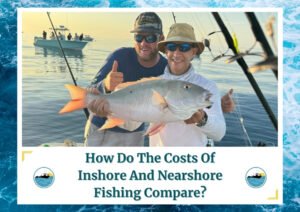
How Do the Costs of Inshore and Nearshore Fishing Compare?
The costs of inshore and nearshore fishing differ greatly. Knowing about these cost differences can help you plan your fishing trip within your budget.
Inshore Fishing Costs
- Lower Fuel Costs: Shorter trips and less distance traveled mean lower fuel expenses.
- Equipment Costs: The light tackle and gear are generally less expensive.
- Charter Costs: Guided inshore trips are often more affordable than nearshore charters.
- Maintenance: Smaller boats and simpler gear require less maintenance.
Nearshore Fishing Costs
- Higher Fuel Costs: Longer distances traveled, and larger boats consume more fuel.
- Equipment Costs: More robust gear and specialized equipment are more expensive.
- Charter Costs: Nearshore charters are typically more costly due to the duration and resources required.
- Maintenance: Larger boats and complex equipment require more maintenance.
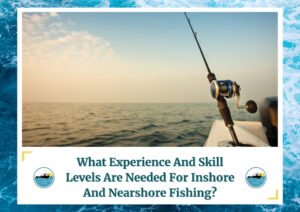
What Experience and Skill Levels Are Needed for Inshore and Nearshore Fishing?
Inshore and nearshore fishing have different skill requirements. Inshore fishing is great for beginners and is family-friendly. Nearshore fishing demands a bit more skill and knowledge.
Inshore Fishing Experience and Skill Level
- Beginner-Friendly: Suitable for beginners and casual anglers.
- Techniques: Easier to learn and master.
- Physical Demands: Less physically demanding than nearshore fishing.
- Trip Duration: Shorter trips, allowing for frequent practice and learning.
Nearshore Fishing Experience and Skill Level
- Intermediate Skills: Requires more experience and knowledge.
- Techniques: More complex techniques and equipment handling.
- Physical Demands: More physically demanding, with longer fights and rougher conditions.
- Trip Duration: Longer trips require stamina and endurance.
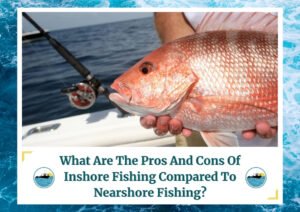
What Are the Pros and Cons of Inshore Fishing Compared to Nearshore Fishing?
Inshore Fishing Pros
- Accessibility: Easier and quicker to access fishing spots.
- Cost: Generally lower costs for trips and equipment.
- Beginner-Friendly: Suitable for all skill levels.
- Calm Waters: More comfortable and safer for families and beginners.
Inshore Fishing Cons
- Smaller Fish: Targets smaller species, which may not appeal to trophy hunters.
- Limited Adventure: Less thrill compared to the open ocean experience.
Nearshore Fishing Pros
- Larger Fish: Targets larger game fish, offering a thrilling experience.
- Adventure: The excitement of the deeper waters and challenging conditions.
- Diverse Species: Opportunities to catch a wide variety of larger fish.
Nearshore Fishing Cons
- Cost: Higher costs for trips and specialized equipment.
- Accessibility: Requires more travel time and preparation.
- Physical Demands: More physically demanding and challenging.
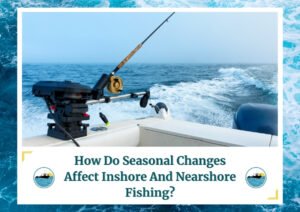
How Do Seasonal Changes Affect Inshore and Nearshore Fishing?
Seasonal changes impact inshore and nearshore fishing differently. Inshore fishing is more active in the warmer months. Fish are more abundant near the coast, then. During cooler months, fish may be less active, but certain species become easier to catch. Nearshore fishing peaks in spring and summer. This is when migrating fish come close to shore. However, in fall and winter, fish are less active. So, you may need to take longer trips to find them. Knowing these seasonal patterns can help you plan. They show the best time for your fishing adventures.

What Are the Environmental Considerations for Inshore and Nearshore Fishing?
Environmental considerations are important for both inshore and nearshore fishing. Inshore fishing requires protecting sensitive habitats. These include seagrass beds and mangroves. It also requires minimizing pollution and practicing catch and release. These actions help preserve fish populations. Nearshore fishing involves following catch limits. This is to prevent overfishing, reduce bycatch, and avoid marine debris. Understanding these factors helps ensure fishing is done responsibly. It also helps make sure it is sustainable. This is true in both inshore and nearshore environments.
Conclusion
Choosing between inshore and nearshore fishing depends on your preferences. It also depends on your experience and trip goals. Both types of fishing offer unique experiences and challenges. Inshore fishing is ideal for beginners, families, and those looking for a relaxed, accessible experience. Nearshore fishing is for thrill-seekers and experienced anglers. They want adventure and larger catches.
You may prefer calm, productive inshore fishing or adventurous nearshore fishing. Fish Daily Charters offers charter fishing trips tailored to your needs. Our experienced captains and well-equipped boats ensure a memorable and successful fishing experience. Book your next trip with us today and have an unforgettable adventure on the water.
